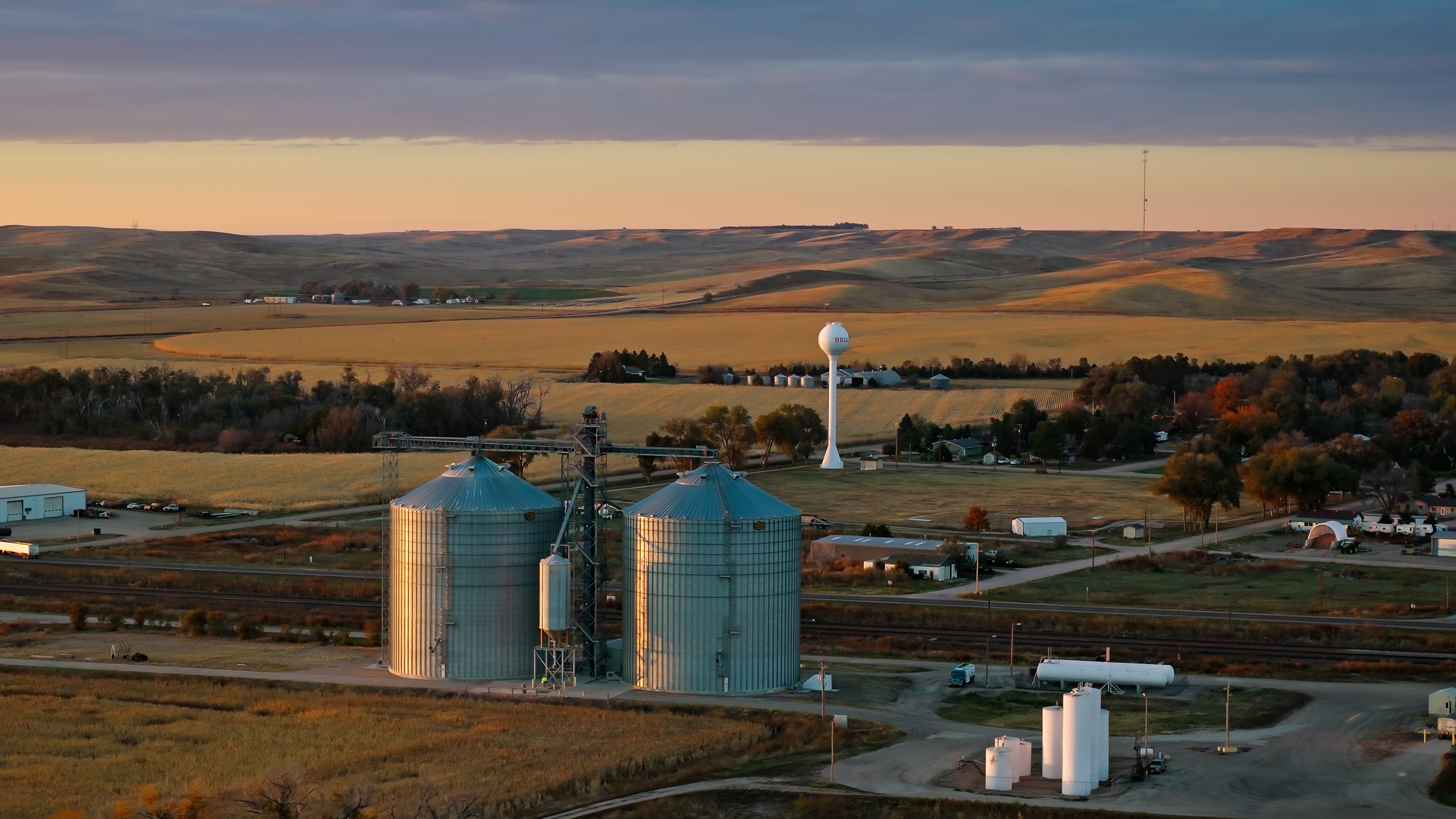One Way to Stay Ahead of Inflation: Qualified Opportunity Funds
QOFs based in areas with a long history of successful oil and gas production in the U.S. and with their advantage of deferring capital gains taxes (and in some cases eliminating them) could be a winning hedge for your investment portfolio.


2020 won’t be remembered fondly by many people, for obvious reasons. The onset of the COVID pandemic was devastating to the economy, necessitating a reversal of monetary policy. The Fed slashed interest rates to zero, as it had a dozen years earlier in response to the collapse of the housing market and the Great Recession in 2008. The rate of inflation, which had drifted to 2.5% by the beginning of 2020, dropped almost to zero as well, stabilizing between 1.2% and 1.4% for the remainder of the year.
It's uncertain if and when interest rates will drop as low again. However, experts agree that it won't happen any time soon.
As the world reopened in 2021-22, the flood of cheap cash unleashed by multiple governmental edicts, including the Fed's interest rate reductions, resulted in a fast-paced, overheated economic recovery. By March 2022, the rate of inflation had eclipsed 8% on its way to an eventual high of 9.1%, and the Fed borrowed a page from the Paul Volcker playbook, embarking on a series of 11 (so far) interest rate hikes that raised the Fed funds rate over 500 basis points in little more than a year.
From just $107.88 $24.99 for Kiplinger Personal Finance
Be a smarter, better informed investor.

Sign up for Kiplinger’s Free Newsletters
Profit and prosper with the best of expert advice on investing, taxes, retirement, personal finance and more - straight to your e-mail.
Profit and prosper with the best of expert advice - straight to your e-mail.
Investors were pleased when the Federal Reserve announced no interest rate hikes at their September meeting. But astute observers noted that, as he had done in June, Fed Chair Jerome Powell didn't end rate hikes, but rather signaled a “pause” and suggested further hikes later in 2023 and possibly 2024. With inflation remaining stubbornly high, interest rates appear to be destined to remain higher, for longer than had been previously foreseen.
How high and for how long?
The Fed’s goal, of course, is to lower inflation to a target rate of 2%, while not dampening the economy to such an extent that it sparks a recession. The Fed’s track record on monetary manipulation is imperfect at best, but so far, its actions have stymied the many predictions that the economy would be hobbled by recession in 2023. At any rate, whether they’re right or wrong, the Fed’s governors have made it clear that they consider inflation to be a greater threat to the economy than the prospect of recession.
The bottom line
The bottom line is intelligent investors know that they can’t predict how bad inflation will be going forward, but they should at least prepare for the possibility of a worst-case scenario.
However your portfolio is structured, it’s more important than ever to follow the old adage “Don’t fight the Fed” and protect your portfolio against inflation by diversifying your investments.
There are many inflation hedges available to investors, of course. Real estate has been an excellent traditional hedge against inflation, but the possibility of a dawning crisis in commercial real estate may give one pause. TIPS (Treasury inflation-protected securities) and inflation-indexed bonds help investors keep up with inflation, but not beat it. Gold and other commodities historically do well in an inflationary environment, and it would be wise to keep such investments front of mind when contemplating the possibility of continued record-high inflation.
Commodities have long been considered one of the best historical inflation hedges, and one investment stands out that could be an excellent choice in our current inflationary environment, and it just might surprise you.
Take a closer look at oil and gas
At first blush, the mention of investing in the oil and gas sector might be considered contrarian at best and foolhardy at worst. And it's certainly true that the sector appears to be facing some headwinds. The ESG movement has gained traction with investors, and with climate change a concern for the foreseeable future, fossil fuels in general (and oil and gas in particular) appear to be falling out of favor, with renewable energy sources on the rise.
Despite recent tech advances, oil and gas are often imported from politically unsavory and/or unstable entities, making domestic production more feasible. Even the automotive industry, long viewed as a hand-in-glove partner with the oil and gas industry, has professed its collective goal, however far-fetched, of producing nothing but electric vehicles within the next decade or two.
Cause for concern? Perhaps.
Reason to run from oil and gas investments? Think again.
Remember, oil is a commodity whose price is determined by supply and demand. And the forces summarized above — ESG, climate change, the rise of EVs and renewable energy sources — are often, but incorrectly, viewed as constricting demand. In fact, while the ESG movement may achieve its short-term goal of restricting investments in new oil and gas ventures and thus reducing the scope of these ventures, this will affect only the supply of oil. The demand for it, simply put, isn’t going anywhere, even if domestic trends ultimately do favor renewable energy sources and electric cars.
In short, demand will remain strong for the foreseeable future — and, given the world’s dependence on oil and gas for everything from transportation to clean water and power, it will only get stronger. If supply decreases, what does that mean for the price of oil? If buying low to sell high remains a sound investment strategy, the oil and gas industry's current position offers a compelling thesis.
The best way to invest in oil and gas in 2023
Deciding to allocate investment capital to the oil and gas sector is the easy part. There is certainly no shortage of ways to invest, and many investors will limit themselves to studying publicly traded oil majors and buying shares now. That’s certainly a feasible choice, and a likely winner over the long run, especially given the high dividends paid by most of these companies. Making such an investment under the umbrella of a tax-sheltered account, such as a 401(k) or an IRA, offers the tantalizing possibility of the deferral of taxes on dividends and capital gains.
As demand increases and production from existing wells falls, investing in new oil reserves is crucial. Wouldn't it be great if there was a way to invest in exploring, drilling, transporting, storing and refining crude oil and natural gas? Also, wouldn't it be great if we could combine this investment opportunity with a once-in-a-lifetime tax benefit that could potentially eliminate capital gains taxes without needing a tax-sheltered account?
Consider qualified opportunity funds
Even the most sophisticated investors are just now becoming aware of the opportunity to buy into qualified opportunity funds, a structured investment that offers the twin advantage of deferral of current capital gains tax and the potential elimination of any future tax if the subsequent investment is held for at least 10 years. This is possible through the creation of qualified opportunity zones in the Tax Cuts and Jobs Act of 2017.
Some of these funds are based in areas with a long history of successful oil and gas production in the United States. Funding a qualified opportunity fund (QOF) investment with a recently realized capital gain provides the immediate advantage of deferring the payment of the tax on that gain through Dec. 31, 2026. Also, holding the new investment for 10 years or more allows the investor to cash out after a decade with no capital gains tax whatsoever, an extraordinary opportunity.
Naturally, it goes without saying that there are no guarantees of profit when it comes to investments. Also, it remains true that all qualified opportunity funds aren’t created equal. It’s imperative that those looking to take advantage of this timely opportunity do so with the help of an experienced adviser who is knowledgeable about the market and sector.
related content
- Why Now Could Be a Good Time to Invest in Oil and Gas
- Qualified Opportunity Zones With an Energy Boost
- Tax-Smart Strategies for Capital Gains in 2023
- The 1031 Exchange Rules You Need to Know
- Pros and Cons of Deferring Taxes With a 721 Exchange
Profit and prosper with the best of Kiplinger's advice on investing, taxes, retirement, personal finance and much more. Delivered daily. Enter your email in the box and click Sign Me Up.

Daniel Goodwin is a Kiplinger contributor on various financial planning topics and has also been featured in U.S. News and World Report, FOX 26 News, Business Management Daily and BankRate Inc. He is the author of the book "Live Smart - Retire Rich" and is the Masterclass Instructor of a 1031 DST Masterclass at www.Provident1031.com. Daniel regularly gives back to his community by serving as a mentor at the Sam Houston State University College of Business. He is the Chief Investment Strategist at Provident Wealth Advisors, a Registered Investment Advisory firm in The Woodlands, Texas. Daniel's professional licenses include Series 65, 6, 63 and 22. Daniel’s gift is making the complex simple and encouraging families to take actionable steps today to pursue their financial goals of tomorrow.
-
 Social Security Wage Base Just Increased: Who Pays More Tax in 2026?
Social Security Wage Base Just Increased: Who Pays More Tax in 2026?Payroll Taxes The Social Security Administration has announced significant changes affecting millions as we approach a new year.
-
 Quiz: How Well Do You Understand the Social Security Earnings Test?
Quiz: How Well Do You Understand the Social Security Earnings Test?Quiz Test your basic knowledge of the Social Security earnings test in our quick quiz.
-
 Debunking Three Myths About Defined Outcome ETFs (aka Buffered ETFs)
Debunking Three Myths About Defined Outcome ETFs (aka Buffered ETFs)Defined outcome ETFs offer a middle ground between traditional equity and fixed-income investments, helping provide downside protection and upside participation.
-
 This Is Why Judge Judy Says Details Are Important in Contracts: This Contract Had Holes
This Is Why Judge Judy Says Details Are Important in Contracts: This Contract Had HolesA couple's disastrous experience with reclaimed wood flooring led to safety hazards and a lesson in the critical importance of detailed contracts.
-
 A Lesson From the School of Rock (and a Financial Adviser) as the Markets Go Around and Around
A Lesson From the School of Rock (and a Financial Adviser) as the Markets Go Around and AroundIt's hard to hold your nerve during a downturn, but next time the markets take a tumble, remember this quick rock 'n' roll tutorial and aim to stay invested.
-
 I'm a Financial Pro: This Is How You Can Guide Your Heirs Through the Great Wealth Transfer
I'm a Financial Pro: This Is How You Can Guide Your Heirs Through the Great Wealth TransferFocus on creating a clear estate plan, communicating your wishes early to avoid family conflict, leaving an ethical will with your values and wisdom and preparing them practically and emotionally.
-
 To Reap the Full Benefits of Tax-Loss Harvesting, Consider This Investment Strategist's Steps
To Reap the Full Benefits of Tax-Loss Harvesting, Consider This Investment Strategist's StepsTax-loss harvesting can offer more advantages for investors than tax relief. Over the long term, it can potentially help you maintain a robust portfolio and build wealth.
-
 Social Security Wisdom From a Financial Adviser Receiving Benefits Himself
Social Security Wisdom From a Financial Adviser Receiving Benefits HimselfYou don't know what you don't know, and with Social Security, that can be a costly problem for retirees — one that can last a lifetime.
-
 Take It From a Tax Expert: The True Measure of Your Retirement Readiness Isn't the Size of Your Nest Egg
Take It From a Tax Expert: The True Measure of Your Retirement Readiness Isn't the Size of Your Nest EggA sizable nest egg is a good start, but your plan should include two to five years of basic expenses in conservative, liquid accounts as a buffer against market volatility, inflation and taxes.
-
 New Opportunity Zone Rules Triple Tax Benefits for Rural Investments: Here's Your 2027 Strategy
New Opportunity Zone Rules Triple Tax Benefits for Rural Investments: Here's Your 2027 StrategyNew IRS guidance just reshaped the opportunity zone landscape for 2027. Here's what high-net-worth investors need to know about the enhanced rural benefits.